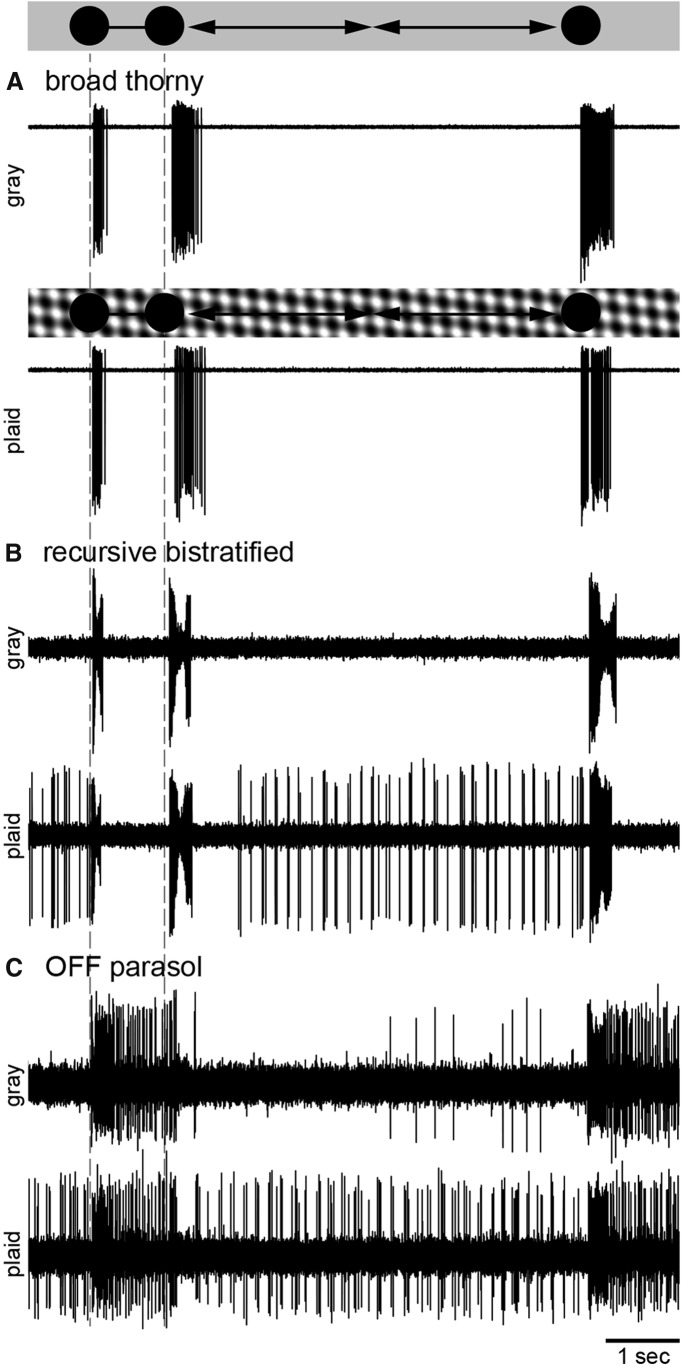Figure 9.
Object slip stimulus. The schematics on top of the figure and between the spike traces illustrate the stimuli. The initial presentation of the spot and the onset of its motion are indicated by dashed lines. The background was either uniform gray or a drifting plaid pattern. A, Top trace, A black spot (360 μm diameter) was flashed onto the receptive field of a broad thorny cell on a gray background, evoking a spike response in the cell (first spike burst on the left). The spot was moved away from the cell's receptive field at a speed of 4° of visual angle per second (second spike burst). A third spike burst was elicited when the spot returned into the cell's receptive field. Bottom trace, The stimulus was repeated while the gray background was replaced with a full-field, sinusoidal plaid pattern (black and white bars, 70 μm bar width, 100% local contrast, 0% mean contrast across the full stimulus presentation). The plaid moved continuously at a speed of 4° visual angle per second. B, C, The same sets of stimuli were presented to a recursive bistratified cell (B) and an OFF parasol ganglion cell (C).

